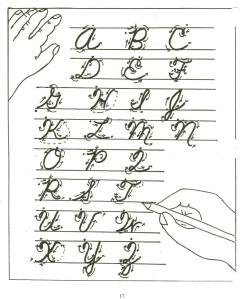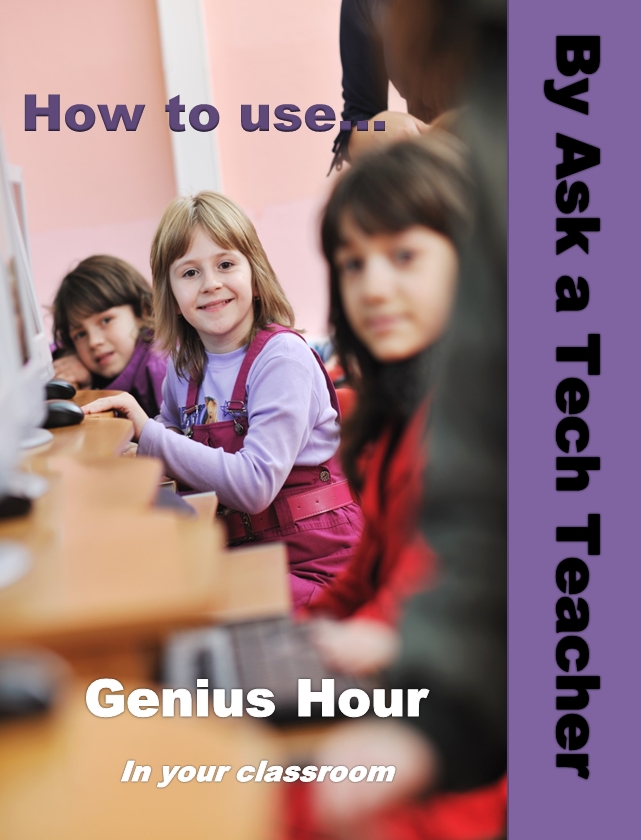 I wrote about the demise of handwriting 2.5 years ago. Seems even truer now than then. One problem for both sides is that Common Core is ‘silent’ on it, according to the Alliance for Excellence in Education. That’s like the Fat Lady warming up, but not sure when she’ll be performing. Where Common Core has a lot to say about many tools required to deliver the education that will lead to college and career for students, it doesn’t mention ‘cursive’ at all. Though Common Core allows for a nominal amount of personalizing–meaning add-ons–only eleven states (as of publication) have amended their education requirements to mandate cursive be included in the curriculum. Not a ringing endorsement. Headlines such as these proliferate in the news:
I wrote about the demise of handwriting 2.5 years ago. Seems even truer now than then. One problem for both sides is that Common Core is ‘silent’ on it, according to the Alliance for Excellence in Education. That’s like the Fat Lady warming up, but not sure when she’ll be performing. Where Common Core has a lot to say about many tools required to deliver the education that will lead to college and career for students, it doesn’t mention ‘cursive’ at all. Though Common Core allows for a nominal amount of personalizing–meaning add-ons–only eleven states (as of publication) have amended their education requirements to mandate cursive be included in the curriculum. Not a ringing endorsement. Headlines such as these proliferate in the news:
Technology may script an end to the art of cursive writing
Is cursive’s day in classroom done?
No longer swearing by cursive writing
Studies show one in three children struggle with handwriting. I’d guess more, seeing it first hand as a teacher. Sound bad? Consider another study that one in five parents say they last penned a letter more than a year ago.
Let’s look at the facts. Students handwrite badly, and don’t use it much when they grow up (think about yourself. How often do you write a long hand letter?). Really, why is handwriting important in this day of keyboards, PDAs, smart phones, spellcheck, word processing? I start students on MS Word in second grade, about the same time their teacher is beginning cursive. Teach kids the rudiments and turn them over to the tech teacher for keyboarding.
I searched for reasons why I was wrong. Here’s what I found:
- 1 in 10 Americans are endangered by the poor handwriting of physicians.
- citizens miss out on $95,000,000 in tax refunds because the taxman can’t read their handwriting
- Poor handwriting costs businesses $200,000,000 in time and money that result in confused and inefficient employees, phone calls made to wrong numbers, and letters delivered to incorrect addresses.
What do you think?
More on Handwriting and keyboarding:
Handwriting vs. Keyboarding–from a Student’s Perspective
When is Typing Faster Than Handwriting?
Jacqui Murray has been teaching K-18 technology for 30 years. She is the editor/author of over a hundred tech ed resources including a K-12 technology curriculum, K-8 keyboard curriculum, K-8 Digital Citizenship curriculum. She is an adjunct professor in tech ed, Master Teacher, webmaster for four blogs, an Amazon Vine Voice, CSTA presentation reviewer, freelance journalist on tech ed topics, contributor to NEA Today, and author of the tech thrillers, To Hunt a Sub and Twenty-four Days. You can find her resources at Structured Learning.





































I think this is an interesting question. I started teaching elementary age kids keyboarding in the late 80’s when people didn’t think it was important. Funny now, we’re not sure handwriting is important. From a creative point of view there is a lot of evidence for the connection between hand, pen and the right brain. Many feel the best journaling and creative writing begins with that connection. I also wonder whether the advent of the pad, with drawing apps, may bring us that connection in a new way.
Great thoughts, Diana. I’d love to see some research on whether drawing with the iPads will replace what students get with handwriting. Someone will eventually do that sort of study.
I began programming computers in 1957, and retired from Intel in 1995 (verifying non-Luddite credentials). I find the passion for introducing gadgets into education deplorable, from calculators to iPads. The reason is that the concentration on teaching children how to use tools (and that’s all computers/calculators/etc. really are) reduces the time teachers have with students on the real meat and potatoes of education – the 3Rs, history and the arts. I can not believe that all those countries whose students are substantially outperforming ours don’t find ways to deal with the absence of technologies. The majority of them don’t allow calculators in the classroom until long after students have internalized multiplication tables and other facts that they will use daily through the remainder of their studies and of their lives.One of the comments above implies that, with students writing so badly, they will need some sort of electronic keyboard to communicate in print at all. It may be, as was said elsewhere, that nobody writes long letters in longhand any more, but do you believe it’s realistic that anyone who wants to write even a short note should be dependent on an expensive battery-operated device to do so? This doesn’t pass the good-sense test for me, and it doesn’t for many of the students from high-performing school systems that either forbid or can’t afford these devices. Amanda Ripley has written a terrific book on high-performing school systems, mostly in other countries (“The Smartest Kids In The World: and how they got that way”), which makes clear what goes into great school systems. I don’t recall seeing anything on training third-graders on how to use a keyboard to write paragraphs in that book, and I agree with the comment I recently read that the Common Core authors’ beliefs that third graders can write three coherent paragraphs on a computer is probably a fantasy. The reality is that kids need the basics for most of their school years – if necessary they can learn the intricacies of computers, operating systems, communications etc. in months near the end of their high school years. They’ll quickly learn to use these tools in conjunction with genuine learning in order to succeed. I’d much rather see teachers fall in love with their subject matter and be experts in that than having them diddling with the tools that these kids can pick up and learn to use, almost in their spare time.
A lot of teachers would agree with your assessment, William. Common Core pushes technology so that students can become independent thinkers (by being able to research and understand topics), collaborate (which requires typing in information to share with others). They want students to strategically and capably use technology–use it well where it enhances learning and education. With libraries closed down all over the nation and internet libraries open 24/7, it seems that ship has sailed.